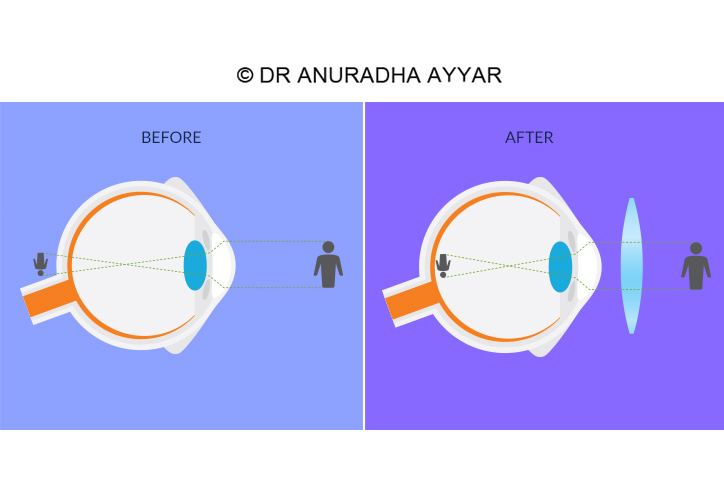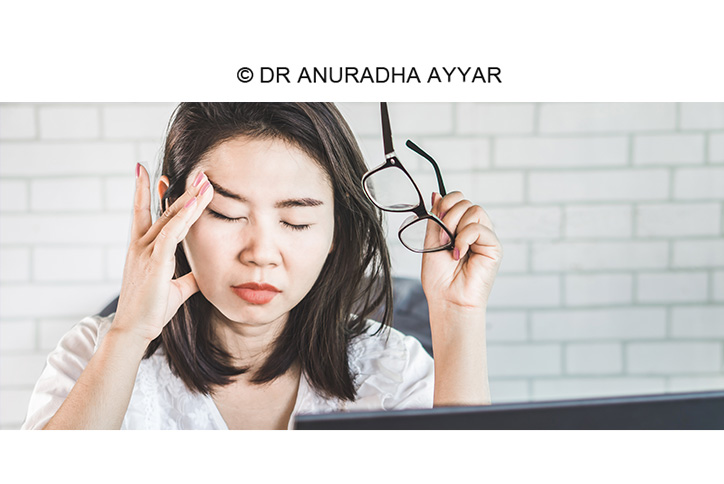General Ophthalmology
Expert doctors at OASES Eye Care Center provide the diagnosis, prevention, and treatment of almost all eye conditions and visual issues. We also treat and monitor certain conditions, such as glaucoma, retinal conditions, corneal conditions, cataracts etc.

LASIK
LASIK is used to correct most vision concerns such as myopia, hyperopia and astigmatism.
Contact Us
Dry Eye
Dry eye occurs when the eyes are not sufficiently lubricated leading to excessive dryness.
Contact Us


Hyperopia
Hyperopia is a condition in which you can see distant objects clearly, but objects nearby may be blurry.
Contact Us

Computer Vision Syndrome
This concern is caused due to long hours spent in front of electronic display.
Contact Us
General Ophthalmology services at OASES
The field of Ophthalmology is concerned with the diagnosis and treatment of eye disorders. General ophthalmologists are specialists engaged in eye care services that range from comprehensive eye examinations to surgical evaluations. At OASES, patients often first interact with General ophthalmologists for their routine eye evaluation or ocular complaints. Here are some of the eye concerns our General ophthalmologists commonly treat.Refractive Errors
These errors impact vision and are typically caused when light is unable to be focused accurately on the retina due to the shape of the eye. These are the most common form of vision concerns and which can be divided into 4 sub-categories.
Nearsightedness (myopia)
Among the most common vision concern in ophthalmology, where objects at a distance appear blurry and unclear. An abnormal length of the eye or a curved cornea could be responsible for this condition. Prescription spectacles, contact lens or laser surgery are treatment measures for myopia.
Farsightedness (hyperopia)
In this case, a flat cornea or a smaller eye distorts the angle at which light hits the retina causing objects that are near to appear blurry. This condition can also be resolved with the use of prescription spectacles, contact lens or laser surgery.
Astigmatism
In this refractive concern, both near and far objects appear blurry, often due to an abnormally shaped cornea. Astigmatism could be of the myopic or hyperopic variety. Treatment solutions include prescription spectacles, contact lens or laser surgery.
Presbyopia
This vision concern occurs as a result of changes in the eye shape and cornea as one ages (40 years usually). Reading and other near work can be difficult with this condition and can typically be treated with the help of prescription spectacles, contact lens commonly.
LASIK
LASIK (laser-assisted in situ keratomileusis) is a painless and a common form of surgery used to correct most vision concerns such as myopia, hyperopia and astigmatism. The surgery rectifies the abnormalities of the cornea shape thus allowing light to hit the retina accurately. A quick procedure with a short recovery time has made this process extremely popular among those that no longer want to deal with contact lenses and eyeglasses. At OASES, you will get access to the finest technology and specialists to restore your vision safely.
Dry Eye
Dry eye is often a chronic condition which occurs when the eyes are not sufficiently lubricated leading to excessive dryness. Tears are an important aspect in keeping the eyes healthy – they keep the eyes lubricated and help wash away foreign particles thus reducing the risk of infection. In case tears are not produced adequately, it can lead to dryness, itching, eye strain or burning in the eyes as well as future vision problems. In view of long hours of computer usage these days, dry eye is very common among the young as well.
Computer Vision Syndrome (CVS)
This syndrome refers to a number of vision concerns that are primarily caused due to long
hours spent in front of a computer screen, tablet, or even a mobile phone. CVS can affect
adults as well as kids that spend prolonged hours in front of a screen. In fact, about 60
million people suffer from CVS globally. Additionally, staring at a screen typically leads to
reduced blinking which can cause dry eyes. Other common symptoms of CVS include
headaches and blurred vision.
Cataract
A cataract is a clouding over the lens of your eye affecting vision. This condition progresses at a slow pace and can affect either one or both eyes. People with cataracts suffer from blurry vision that can affect daily tasks, poor night vision, difficulty with bright lights and more. Rectifying measures include cataract surgery in form of cataract extraction (Phacoemulsification, which is the most commonly used method of surgery) and intraocular lens implantation that needs to be carefully evaluated after judging the severity of the condition.
Glaucoma
Glaucoma is a condition that occurs due to pressure build-up inside the eye. Initially, the symptoms may be none or minimal making regular check-ups essential for a timely diagnosis. In other cases, people may experience intermittent redness, headaches, poor vision or vision loss. Treatment may include eye drops or surgery, based on the severity of the case at the time of diagnosis.
Retinal Diseases
Retinal diseases are those that impact the retina, a thin layer of tissue inside the eye. Some of the retinal diseases that can be screened and diagnosed at OASES include: Retinal tear wherein the thin tissue of the retina suffers damage.
Retinal detachment caused due to build-up of fluid under the retina displacing it from the tissue layers. Diabetic retinopathy which damages the tiny blood vessels in your eye due to a diabetic condition that could affect vision.
Hypertensive retinopathy caused by high blood pressure can produce changes in the retinal blood vessels and may even lead to sudden blockage and reduction in vision. Epiretinal membrane that comes over the retina impacting vision. Macular hole in the retina that may occur due to an injury or degenerative changes in the retina.
Macular degeneration which causes the retina to degenerate and thus impacts vision.
Vision problems and eye concerns can range from mildly uncomfortable to almost debilitating. A lot of eye problems can be rectified easily and be prevented from worsening if they are diagnosed early. This is why it is recommended to schedule a routine eye screening every 6-12 months for all ages.
